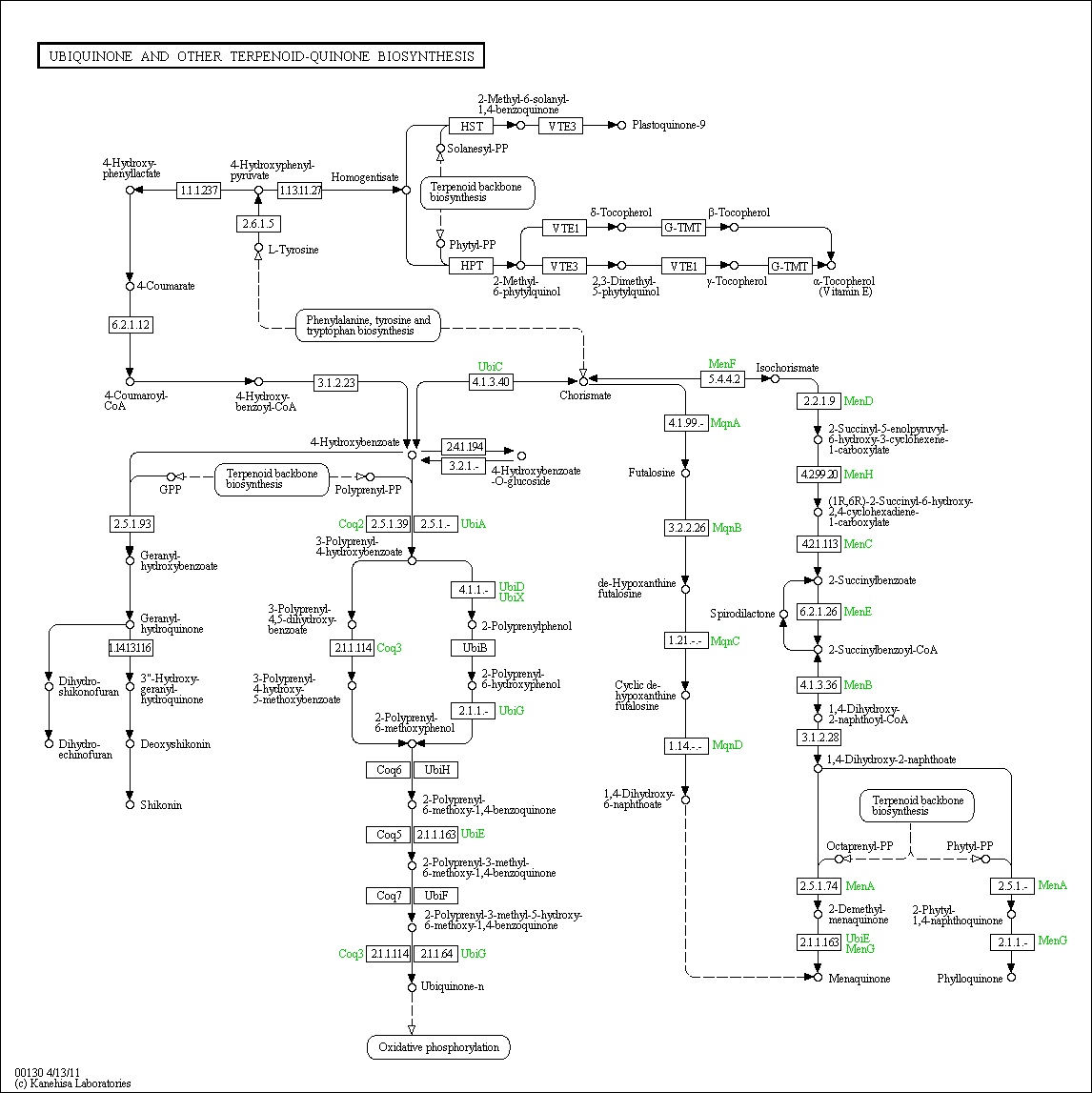Ubiquinone and Other Terpenoid-Quinone Biosynthesis
Description: Ubiquinone (UQ), also called coenzyme Q, and plastoquinone (PQ) are electron carriers in oxidative phosphorylation and photosynthesis, respectively. The quinoid nucleus of ubiquinone is derived from the shikimate pathway; 4-hydroxybenzoate is directly formed from chorismate in bacteria, while it can be formed from either chorismate or tyrosine in yeast. The following biosynthesis of terpenoid moiety involves reactions of prenylation, decarboxylation, and three hydroxylations alternating with three methylations. The order of these reactions are somewhat different between bacteria and yeast. Phylloquinone (vitamin K1), menaquinone (vitamin K2), and tocopherol (vitamin E) are fat-soluble vitamins. Phylloquinone is a compound present in all photosynthetic plants serving as a cofactor for photosystem I-mediated electron transport. Menaquinone is an obligatory component of the electron-transfer pathway in bacteria.Source: KEGG (map00130)

Related BMRB Molecules
- Chorismic Acid
- p-Coumaric Acid
- 1,4-Dihydroxy-2-Naphthanoic Acid
- Homogentisic Acid
- 4-Hydroxy-benzoic Acid
- 3-(4-Hydroxyphenyl)Pyruvate
- alpha-Tocopherol
- delta-Tocopherol
- L-Tyrosine
For complete information about pathway, see KEGG [map00130]
